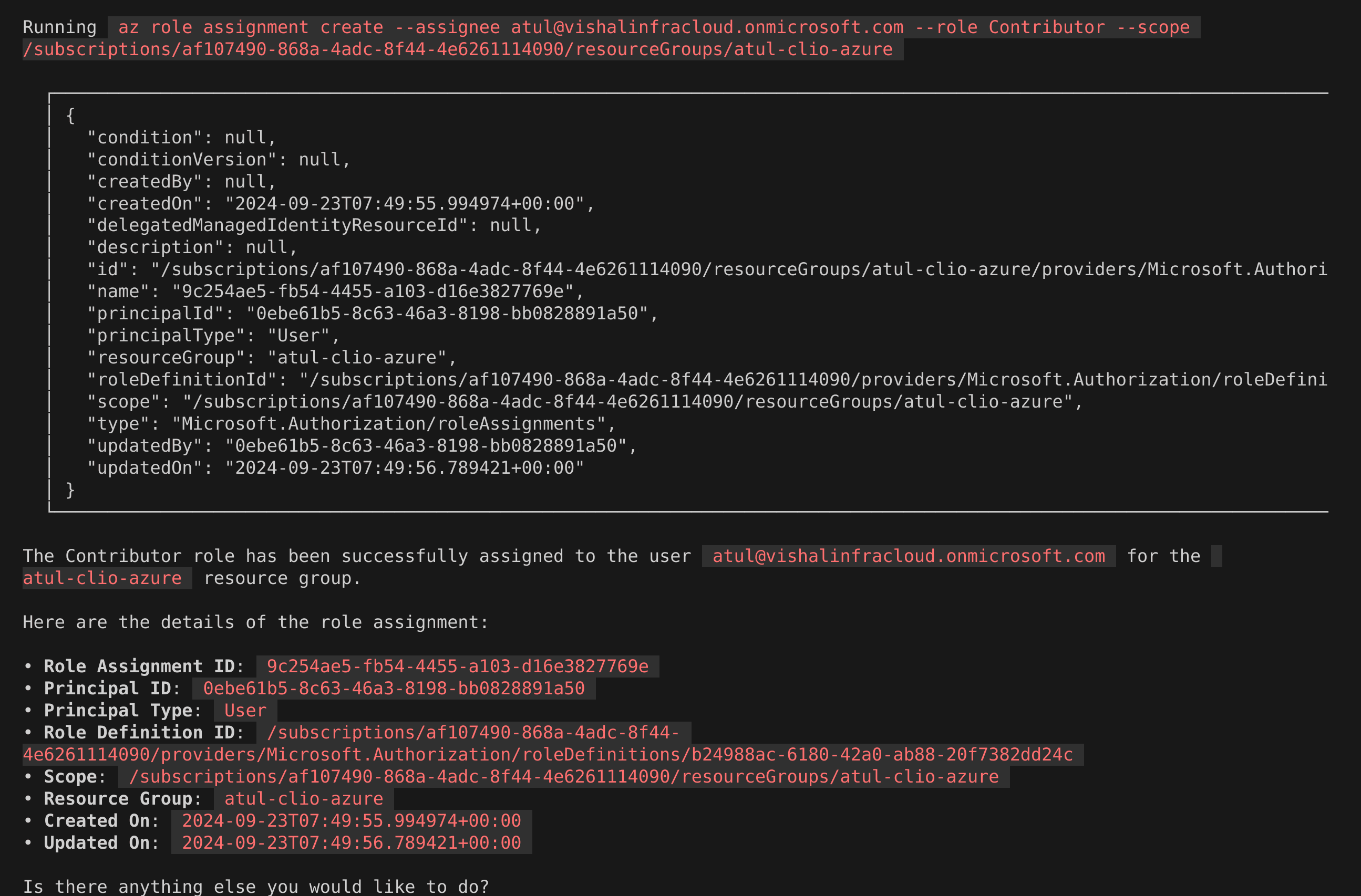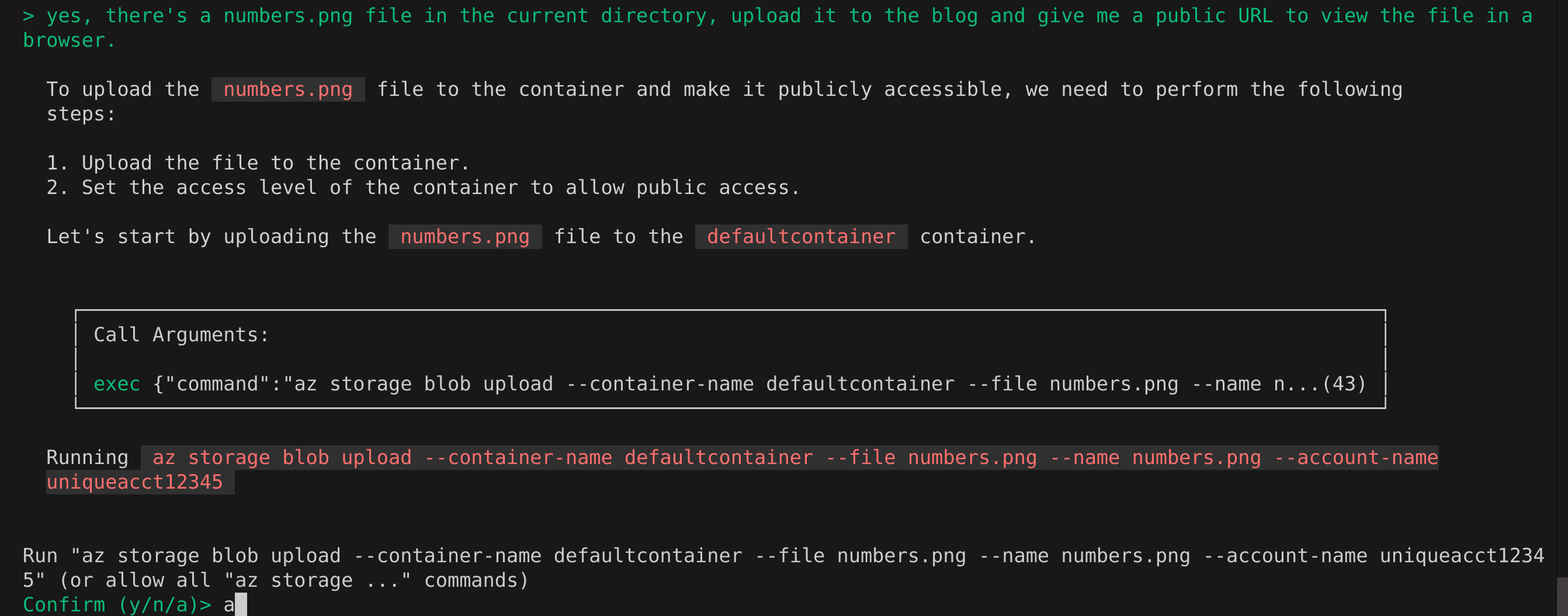Managing cloud resources is a complex and time-consuming task, especially given the complexity of configurations and the constant need for optimization. For instance, as an Azure administrator, you juggle multiple tasks, from provisioning VMs and scaling services to configuring networks and monitoring workloads. These tasks often require complex setup, detailed script writing, and constant fine-tuning.
Time spent on manual tasks can lead to inefficiencies and human errors. AI can significantly impact these by streamlining workflows and reducing manual efforts. Clio, an AI-powered copilot designed for DevOps-related tasks, helps you automate and simplify these workflows directly from your command line.
In this post, we’ll explore how Clio simplifies managing resources on Azure and showcase five tasks you can efficiently handle using this tool.
What is Clio?
Clio is an AI-powered copilot that helps streamline DevOps-related tasks using command-line interface (CLI) agents. It provides intelligent, context-aware assistance directly in your terminal, simplifying managing complex workflows across different cloud environments.
Key Features
- Preconfigured Agents: Clio comes with built-in agents for Azure, GCP, AWS, GitHub, and Kubernetes, making it ready for common platforms and use cases.
- Customizable: You can build and add your own agents using GPTScript, tailoring Clio to fit your specific needs.
- Extendable: Clio’s features are easily customizable and extendable without requiring extensive coding, making it accessible even for users with minimal development experience.
Getting started with Clio is as simple as running brew install gptscript-ai/tap/clio. Once installed, you can authenticate with GitHub to access Clio’s or use your OpenAI API key. If you’d prefer the latter, you can set a custom API key and base URL using environment variables. Refer to clio --help for more help regarding this.
Using Clio For Managing Azure
Clio comes with an Azure agent out-of-the-box and allows you to start managing your Azure resources almost instantly. Whether you’re provisioning VMs or Kubernetes clusters or configuring networks or policies, Clio’s smart assistance simplifies these processes by automating repetitive processes and provides real-time context-aware suggestions.
Let’s explore some key use cases where Clio can enhance your Azure workflows.
Resource Group Management
Resource groups in Azure allow you to manage your resources easily. However, managing resource groups in Azure can be tedious, especially when handling multiple environments. With
Clio, you can effortlessly create, update, and organize resource groups directly from your terminal, saving time and reducing errors.
For instance, it can help create resource groups and allow you to further add resources to it.
If you’re dealing with multiple resource groups, you can also ask Clio to tag the group to make managing different resource groups easier.
It can also help you create and manage roles and access to your resource groups. The best part about Clio is that it “works like a human” and when it isn’t able to get a command working, it automatically tries with a different command and provides the reasoning for the same.
Creating & Managing Virtual Machines
Creating and managing virtual machines often involves navigating complex configurations, including VM sizing, networking, and disk setups, while optimizing costs. This process can be time-consuming and error-prone, particularly when managing numerous VMs across multiple environments.
Clio simplifies these tasks by allowing you to easily spin up, configure, and monitor VMs from your command line.
You can simply ask Clio to create a VM for your needs, and it will automatically suggest (and choose) the appropriate VM with the required size and resources to support your application. In this case, we want to host a WordPress application that is very low-traffic.
You can specify the VM type and ask it to configure everything required to deploy WordPress and access it.
Scaling is always a complex task, but Clio makes it easier by not only providing different configuration values, but also suggesting you various steps to take to enable scaling for your application.
Creating & Managing Kubernetes Clusters
Deploying Kubernetes clusters on Azure typically requires multiple steps, including node configuration, network setup, and integration with Azure services. Cluster management, especially during scaling or upgrades, can be intricate and time-intensive, often requiring detailed YAML configurations and frequent updates.
Clio’s ability to work with kubectl and Azure out-of-the-box addresses these challenges, allowing for straightforward Kubernetes cluster handling through intuitive commands.
For instance, you can ask Clio to spin up a new AKS cluster, and it not only does that but also configures your kubeconfig file to interact with it.
Since it has access to kubectl, it can perform various tasks on your AKS cluster, like deploying an app and configuring the network to allow access to it from the internet.
It can also perform advanced use cases like configuring metrics for your application. Theoretically, configuring a metrics provider and an end-point is a simple task. However, it’s quite a complex task practically. But Clio can handle it fairly easily.
Handling Azure Storage Accounts and Blobs
Azure Storage Accounts and Blobs offer robust solutions for storing large volumes of unstructured data. Efficient management—particularly at scale—demands careful attention to access controls, replication, and performance optimization. Performing these tasks manually via the Azure portal or CLI commands can become overwhelming.
Clio’s built-in support for Azure Storage allows you to manage storage accounts and blobs seamlessly, simplifying operations like creating accounts, setting access policies, and monitoring usage, all from the CLI.
For instance, if you’re unsure which storage fits your requirements, ask Clio, and it will suggest options.
It can also perform tasks of uploading, deleting and managing your assets in the storage account.
It can even configure the necessary permissions to allow access to your uploaded files from the Internet with just a command. It automatically understands when any permissions, access, or additional configurations are required to make things work.
In this case, it understood that some permission was supposed to be set for the storage container to access the uploaded file from the Internet.
Managing security and policies
Security and compliance management in Azure involves configuring detailed policies, auditing permissions, and enforcing best practices, which can be daunting, especially in complex cloud environments. Ensuring your resources remain secure while staying compliant with industry standards often requires constant monitoring and manual effort.
Clio eases this burden by allowing you to define and enforce security policies, manage access controls, and monitor security statuses—all from your command line.
At the very basic level, we can ask Clio to configure policies to adhere to industry best practices. Since Azure provides a basic set of policies, Clio can automatically fetch the list of all the policies and suggest the ones that suit your requirements.
It can even create custom policies that you instruct and ensure they are correctly applied and enforced.
Conclusion
In this blog post, we looked at a few use cases where you can use Clio to interact with your Azure infrastructure and easily perform different tasks right from your terminal. By providing intelligent, context-aware assistance, Clio allows you to focus on optimizing your infrastructure and delivering value to your customers without getting bogged down by complex configurations.
With its intuitive commands and built-in support for Azure services, other cloud offerings, and native CLIs, Clio empowers you to work more efficiently, enabling you to unleash your full potential as an SRE or cloud administrator. Start your journey with Clio today and discover a smarter way to manage your cloud resources!




















